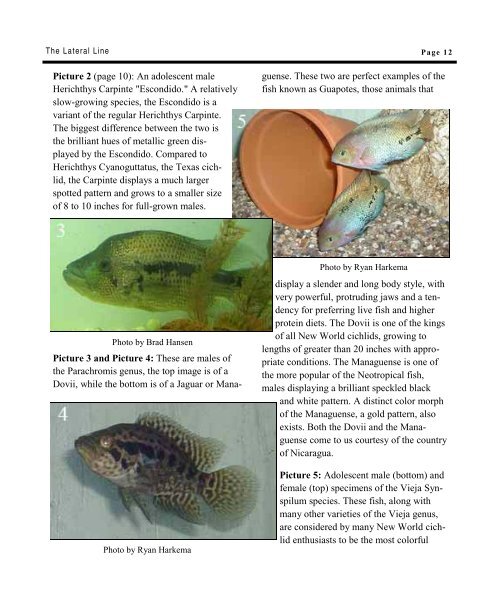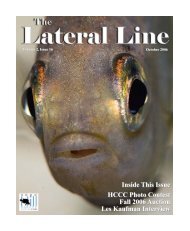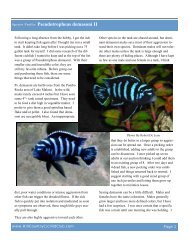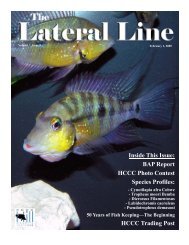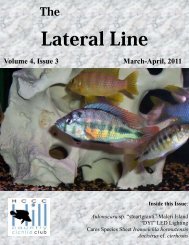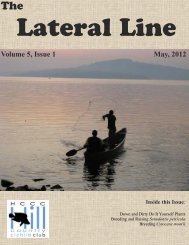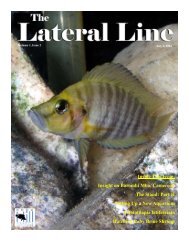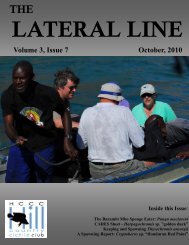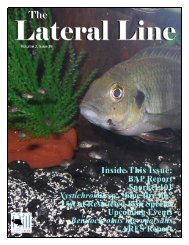Lateral Line August 2005.pub - Hill Country Cichlid Club
Lateral Line August 2005.pub - Hill Country Cichlid Club
Lateral Line August 2005.pub - Hill Country Cichlid Club
You also want an ePaper? Increase the reach of your titles
YUMPU automatically turns print PDFs into web optimized ePapers that Google loves.
The <strong>Lateral</strong> <strong>Line</strong> Page 12Picture 2 (page 10): An adolescent maleHerichthys Carpinte "Escondido." A relativelyslow-growing species, the Escondido is avariant of the regular Herichthys Carpinte.The biggest difference between the two isthe brilliant hues of metallic green displayedby the Escondido. Compared toHerichthys Cyanoguttatus, the Texas cichlid,the Carpinte displays a much largerspotted pattern and grows to a smaller sizeof 8 to 10 inches for full-grown males.Picture 3 and Picture 4: These are males ofthe Parachromis genus, the top image is of aDovii, while the bottom is of a Jaguar or Managuense.These two are perfect examples of thefish known as Guapotes, those animals thatPhoto by Brad HansenPhoto by Ryan HarkemaPhoto by Ryan Harkemadisplay a slender and long body style, withvery powerful, protruding jaws and a tendencyfor preferring live fish and higherprotein diets. The Dovii is one of the kingsof all New World cichlids, growing tolengths of greater than 20 inches with appropriateconditions. The Managuense is one ofthe more popular of the Neotropical fish,males displaying a brilliant speckled blackand white pattern. A distinct color morphof the Managuense, a gold pattern, alsoexists. Both the Dovii and the Managuensecome to us courtesy of the countryof Nicaragua.Picture 5: Adolescent male (bottom) andfemale (top) specimens of the Vieja Synspilumspecies. These fish, along withmany other varieties of the Vieja genus,are considered by many New World cichlidenthusiasts to be the most colorful


